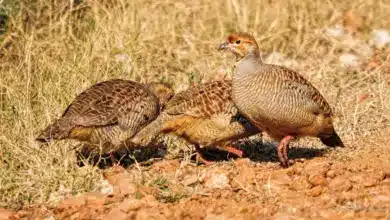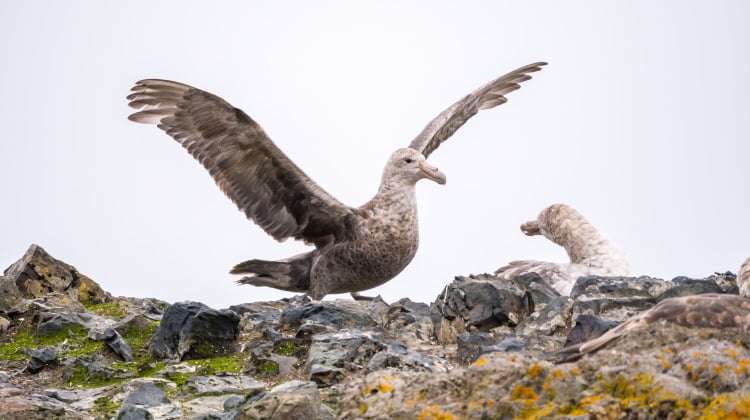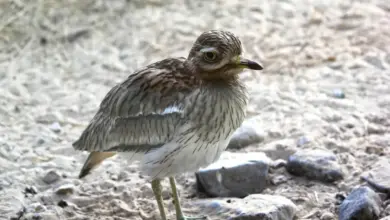Green Pheasants aka Japanese Green Pheasants
Green Pheasants (Phasianus versicolor)
The Green Pheasants, Phasianus versicolor – also known as Japanese Pheasants or Versicolor Pheasants – are endemic to Japan, except the island of Yezo, and are introduced to the Hawaiian Islands, western Europe, and the United States. These pheasants prefer grassy, bushy areas and light forest areas near cultivated lands and meadows.

This species is widespread throughout its native range. It often frequents farmlands and human settlements. The introduced populations in Hawaii are stable.
Populations in Western Europe have perhaps bred with the Common Pheasants for several years and no pure Green Pheasants exist there any longer.
This species has been crossed with the Common Pheasants on some game farms in North America and released.
The Green Pheasant is the national bird of Japan.
It has been noted that these pheasants are particularly sensitive to earth tremors not felt by humans and they call in concert alerting humans of impending quakes.
Subspecies and Hybrids:
The Green Pheasant is sometimes classified as a subspecies of the Common Pheasant, especially since this species is very similar to some of the mutations (namely the melanistic varieties) of the Common Pheasant. Others opine that these two species are simply closely related.
- Southern Green Pheasant or Kiji (P. versicolor versicolor) – the darkest of all sub-species. This pheasant is mainly metallic green.
- Pacific Green Pheasant (P. v. tamensis) – lighter than the Southern Green, with more blue and purple in the overall plumage.
- Northern Green Pheasant (P. v. robustipes) – lighter than the other two. The crown and the mantle have more bronze.
The females are all very similar, but follow the same trend as the males: darker in the south to lighter in the north.
Hybrids between the Southern Green and the Common Pheasants occurred in captivity and in the wild where both species have been introduced into adjoining ranges. The hybrids vary in plumage but are quite different from any mutations.
The Green Pheasant also hybridized with Japan’s other endemic pheasant, the Copper Pheasant, although there have only been a few reports of such hybrids in the wild.
Description:
Males:
The mantle is green with a few small buff (= a pattern of fine, wavy, worm-like lines or streaks of color) on its lower part. The crown, nape, back, and rump are dark metallic green, much tinged with olive or bluish grey. The neck is purplish-violet; the wing-coverts bluish-grey; the rump and upper tail coverts greenish-grey; the tail green with purple. The beak is horn / yellowish colored and their legs and feet are blackish.
Female:
Not as brightly colored as the male to easily conceal her while brooding or caring for the chicks. Females are more strongly mottled than the Common Pheasant females. The dark part of the feathers of the mantle is black and extends right up to the narrow, pale brown border, and it has a green sheen near the tip.
Personality:
These game pheasants are restless and wary and usually remain rather wild in captivity. They startle easily and often hide or seek sanctuary in thick vegetation or shrubs where they also usually sleep.
Breeding:
Green Pheasants are relatively easy to keep in captivity but are not currently bred in large numbers. They should be provided a large well-planted aviary, about 30 sq. ft / 9 m2 would be recommended. Sheltered areas should be provided, including placing grass and reed tufts throughout for the hen to nest under. Males are not aggressive and several hens can be bred to one male. These pheasants are pretty hardy and withstand cold temperatures pretty well.
The breeding season starts in March or April and goes on until June. Immature birds will be ready to breed once they have attained their adult plumage, which is when they are about a year old.
The hen lays 6 to 15 olive-colored eggs which she incubates for 23 to 25 days. The hens are usually good brooders and make attentive parents provided they are undisturbed during this time and their nest is in a well-sheltered area.
Diet:
Wild Diet: Grains, plants, insects, and worms
Captive Diet: Pellets, seeds, green food, live food.
Other Related Web Links: Pheasant General Information … Pheasant Species … Pheasant Taxonomy … Breeding Pheasants … Pheasant Photo Gallery … Housing Pheasants … Pheasant Diseases





